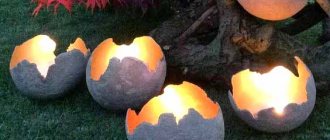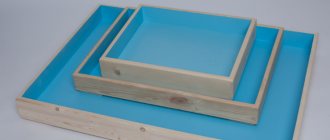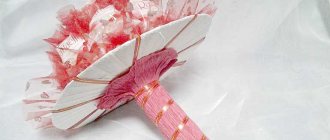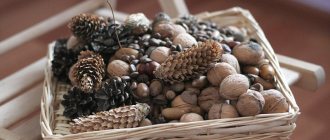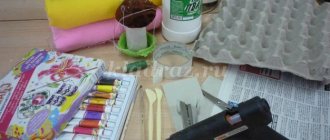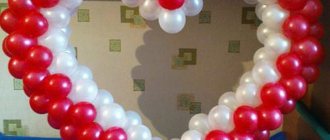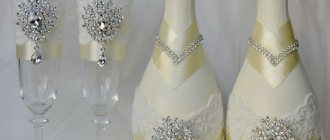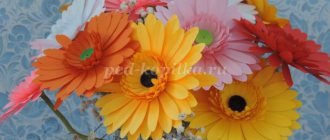Advantages and disadvantages
Sand murals have many advantages.
By creating a picture out of sand, the child will improve fine motor skills. It is known to stimulate brain development and have positive effects on speech and intelligence. While drawing with sand, the child will show imagination, and his fingers will become more dexterous.
This activity helps develop creative thinking and attention to detail. In addition, it helps develop perseverance and concentration. If parents join in creating the craft, such a pastime will be excellent family entertainment.
You can entrust several children to make a picture, then they will learn teamwork and mutual assistance. Sand is considered a natural material with calming properties. By handling it with your hands and scattering it on paper, the child will relieve nervous tension. This activity helps reduce aggression and moodiness.
Most sand paintings have virtually no downsides. Yes, individual kits are expensive, but they are of high quality and equipped so that no additional devices are required during operation. But inexpensive options can be frustrating due to the lack of necessary tools, too thin paper base, and an unnumbered stencil. When buying cheap sets, there are also complaints about poor glue and too coarse sand.
Bottle with salt: colored mound with colored salt - master class
First, let's prepare a bottle into which we will pour colored salt. To do this, soak the labels by immersing the bottle in a bowl of warm water. Perhaps over time the paper elements will come off on their own, but the glue with which they were attached often does not come off so easily. And if you got a bottle like this:
its surface must be wiped with a cotton pad soaked in alcohol or solvent until the surface acquires a clean and even shine.
Now let's start making colored salt. To do this, sprinkle a little sea salt on a sheet of white paper.
Apply chalk and roll it over the salt, like a rolling pin.
The more intense the desired shade, the longer you need to roll. That is why you need to pour salt onto a sheet of paper in small portions. Convenient to lay a path.
You can paint the salt and then form a mound, or you can paint it as you go and not bother with saucers - whatever suits you.
Let's move on to forming the mound. Roll a piece of paper into a cone so that there is a small hole in the narrow part. You can use a ready-made funnel, but a paper one is more convenient, since it can be positioned the way we need, while a ready-made one will strive to stay in the center.
We will need to position the funnel so that its hole is directed towards one of the walls of the bottle - then we will get the necessary mounds. So, we position the funnel as convenient for us and add some of the colored salt.
Then we move the hole of the funnel to another wall and pour in salt of a different color. I think the principle of operation is clear. The main thing is not to shake the bottle, otherwise there will be a fuzzy line at the junction of the 2 colors.
Thus, by tinting the salt and pouring it into the bottle using a funnel, we fill the entire container to the end. Now we compact the top layer with a spoon and add more salt - the bottle should be filled flush with the top edge of the neck.
Let's close the bottle with a lid - now you can shake it and rearrange it. If you have compacted the contents tightly enough, there is simply nowhere for the colored salt to spill.
If you are not satisfied with the color of the cap, you can paint it with acrylic paints, choosing a color that matches one of the colors of the contents of the bottle.
Colored sand for modeling
- Colored sand is great for sculpting. Its only difference is the presence of a binder; manufacturers of famous brands add silicone. Thanks to this component, sand acquires a viscous property.
- Another big plus is that classes can be done at home at any time of the year. This is very beneficial because children love to play in the sandbox, and in the cold season not everyone has the opportunity to dig in the sand.
- The purchased version does not require a specialized storage space and does not deteriorate from moisture or dryness.
Unfortunately, purchased sand has disadvantages:
- high price;
- small particles are difficult to clean;
- sticks to clothing and other surfaces.
Sand ceremony at a wedding
The gift giving block is approaching.
Glass containers with colored sand are placed on a beautiful table. I use transparent milk jugs with comfortable handles.
In the center of the composition is an empty container for sand.
Sand ceremony text
HOST: Dear guests, today there will be many wishes (names of the newlyweds) And I propose to materialize our wishes and give them form. Let them serve as a talisman for our (names of the young)
Before you is sand from different parts of the world. And an empty cup that you and I will fill. Each of you can add only one component of happiness to the vessel.
- yellow sand from the Yellow Sea is a symbol of warmth and comfort
- blue - from the Blue Sea - a symbol of serenity and peace
- green - symbol of wealth
- red - symbol of love
If you want to wish our newlyweds love, pour a little red sand into the vessel. Wealth - a little green. Peace and serenity - blue. If you want the family hearth to fill the heart with light and warmth - add yellow sand.
One by one, guests approach the table and pour a small portion of this or that sand into the bowl.
The ceremony is completed by the newlyweds themselves and their mothers.
The host raises the filled vessel and shows the guests what happened
HOST: And let this small gift, which contains all the wishes of your family and friends, become a talisman that will protect your family from all troubles and difficulties. Our gift is as multifaceted as life itself. But no matter how you look at her, she is still beautiful!
Sometimes we look at the same events, but we see them in our own way. Whatever happens in life, try to take each other’s side and look at events from the other side. And may your life be filled with love, care and mutual understanding.
Lighting up the family hearth
HOST: Dear (names of the newlyweds), so that this amulet not only protects, but also illuminates your life, attracts happiness, friends, children into it, I invite your mothers to light up your family hearth.
Mom approaches from both sides. A candle in a sleeve is inserted into the vessel. Moms have lit candles in their hands. From their candles, they light a candle in a bowl of sand as a symbol of the family hearth.
I provide my newlyweds with several candles so that during the holiday they will take care of their hearth and keep the fire burning. It’s very touching how from the first minutes of their life together they take care of their spark.
Sand ceremony for anniversary
It goes in the same direction. We only say wishes to the hero of the day. And a candle in a vessel with sand is a beacon that attracts happiness, prosperity, health, children and grandchildren, and new friends to the home of the hero of the day.
An original gift for a teacher
High school graduation. We say goodbye to the teacher and, of course, we want to leave behind a good memory. This is where the sand ceremony comes to the rescue.
The process itself is fascinating. And, the closer to the finale, the greater the interest of the audience. Besides, it's very touching.
How to choose a set for children?
When buying a fresco for a child, pay attention to important nuances
- Marking. All sets are marked with a recommended age, for example, “3+” or “4+”. In addition, the packaging must contain information about the safety of the product for children.
- Contents of the set. The number of items in the products of different companies differs; for example, there are sets with a frame so that a sand drawing can decorate the wall of a child’s room.
- Complexity. Pictures can consist of a small number of elements or many multi-colored details. For the first lessons, simple images consisting of large parts are better suited.
- Gender of the child. This characteristic can affect the theme of the picture, for example, a boy can buy a picture with a car, a girl – with a princess. A good choice would be a universal image – some kind of animal or a beautiful landscape.
Sand ceremony is a great option
- For the host : each guest briefly and succinctly expresses their wishes. The process does not turn into tedious moral teachings and reading poetry
- For guests who are not strong in eloquence and feel uncomfortable being the center of attention. Here, one phrase is enough for them to congratulate the heroes of the occasion.
- For very sensitive people who can easily burst into tears when delivering congratulatory speeches.
- For the budget conscious. This is a very budget, but beautiful gift option. This is unusual and will be remembered forever.
The article was prepared by Elena Solyannikova
If you liked the article, write us a review in the comments. Share with your friends on social networks. If you have any questions, write in the comments or to me personally on VK and Instagram
How to make colored sand for creativity with your own hands?
- Kinetic sand is a rather expensive product, but smart mothers have long come up with a way out of the situation. They created their own homemade version of colored sand, which is not inferior to its counterpart.
- Swedish modeling material consists of a natural component, silicone and dye. Thanks to silicone, it has the property of ductility. This component can be easily replaced with corn starch.
- A large percentage of the composition of the wonder is sand - 98%, in some cases this figure may decrease. The sand used is purified and fine. An alternative is regular sand, sifted through a sieve and fried in the oven at high temperature. This will allow the sand to be free of harmful germs in case your child wants to put it in their mouth.
- The dye in kinetic sand is natural; it can be replaced with regular food pigment. The variety of flowers in supermarkets is replete, so your imagination has plenty of room to run wild.
Preparation of material
Before you start work, you should take care of the material - sand of various colors and shades. The richer and more varied the palette, the more beautiful the picture will be. Colored sand can be obtained as follows: scatter the sand into jars, filling them about ¾ full. Then dilute gouache paints in jars of water, that is, make “colored water”, and fill the jars with sand with it. Just don't overdo it with water. Before starting to create a picture, the sand should be thoroughly dried.
There is another way to color sand - if you want to get an unusual shade - gold, silver or mother-of-pearl. Lay the sand on a newspaper and spray it with art spray from a distance; after drying the sand, stir it so that the grains of sand do not stick together. You can also use color printer ink to color sand. And instead of sand, you can try using semolina, which can also be painted in different colors. To do this, you can crush the lead of a colored pencil or pastel and grind it together with semolina.
general description
Sand murals, also called sand paintings, are a type of art kit.
The main element of the set is the base drawing, characterized by a special multi-layer structure. The bottom is thick paper covered with a sticky layer, and the top is a protective coating. The coating is removed in parts and sand is poured onto the resulting sticky areas, which immediately sticks.
Complete with a cardboard base, quartz sand is sold in several shades depending on the image. It is dry, crumbly and pleasant to the touch, and can be either small or larger. The material of each color is contained in separate jars, bags or tubes.
Additionally, the package usually contains tools - a measuring spoon and a glass, but sometimes they may be missing. Note that the sand painting technique is not complicated. The child needs to sprinkle the material of the selected color on a certain sticky area of the template, without crossing the contours.
So, to make a bottle of colored salt, you will need:
finely ground sea salt, dry;
glass transparent bottle;
colored chalks for drawing on asphalt (it is important that they are round in cross-section, and preferably large in diameter);
several sheets of white paper;
saucers for pouring colored salt;
favorite essential oil (we took bergamot oil);
colored organza ribbon;
wooden beads to match the ribbon;
acrylic paints for painting the lid (optional).
What is colored sand used for?
Colored kinetic sand was invented in Sweden for therapeutic purposes for children. One of the important functions of a color invention is the development of hand motor skills
This is very important in childhood, as well as in case of any injuries. The second, no less important detail is the relaxing therapy from playing with sand. Kneading the soft bulk material in his hands, the child immerses his body in relaxation
This is very useful in general for children and adults, as well as for those who suffer from stress. Thirdly, when a child sculpts or draws with sand, he develops his imagination, fantasizes, and comes up with something unusual. Fourthly, playing with sand develops accuracy, perseverance and attentiveness in the child.
Sand ceremony set
It all depends on your imagination, event budget and skillful hands. You can purchase ready-made kits, or you can do it yourself. I would like to note that on our website there are other options for original gifts that are created jointly, are not expensive, and bring a whole lot of joy! Click on the link and see for yourself.
Sand Ceremony Vessel
You can purchase ready-made ones . You can make it yourself using beautiful bottles, having previously decorated them. You can use bowl vases or glasses.
For decoration, I use batik outline Perhaps someone will say that the glass contour is better, but I didn’t see the difference. Using an outline, we apply a pattern to the neck of the bottle and to the edges of the glass. We write the date of the holiday, or the name of the event. A little gold or silver powder. This will help the contour dry faster, make it stronger and add visual charm.
After a couple of hours, the outline dries and the vessel can even be washed - this will not harm the inscription.
I don't like useless souvenirs gathering dust in the closet. I like things to be useful and serve us in one way or another. That's why I prefer to turn the sand ceremony vessel into candlesticks
To do this, place a candle in a sleeve in a glass . Or we attach such a candle to the bottle cap.
If you are afraid of open fire, you can use electronic candles
Thus, the souvenir turns into
- family home for newlyweds
- into a lighthouse that attracts friends and relatives for anniversaries
- as a talisman for newborns or birthday people
- as a memorable gift for a teacher, educator, etc.
- into a touching symbol for new residents
- as a symbol of love and light for Valentine's Day
There is no holiday or event where a sand ceremony would not work.
Sand for sand ceremony
You can buy sand on websites and at holiday wholesalers. In the park, at the organizers of creative sandboxes.
You can make it yourself.
How to make colored sand at home
- Wash the river sand, add food coloring or gouache, mix thoroughly. Dry. If necessary, break with a rolling pin and sift through a sieve. PROS : Very fast. Cheap (almost for nothing) CONS : The process makes the kitchen look like a mad scientist's laboratory. Colorful dust is everywhere, including in the nose, in the hair; after a week of such procedures, the kitchen will require renovation
- Color regular salt (preferably coarse) in the same way. Carefully add the dye, mix immediately, spread in a thin layer on a baking sheet and dry. PROS : Fast. Cheap. Not a hassle. There is no need to look for sand; salt is usually always at hand. Colored dust almost does not fly MINUSES : some heroes of the occasion are too preoccupied with superstitions. If a few grains of salt spill past, they may consider it a bad omen and become seriously upset. If you add a little more water to the dye, the salt will dissolve and instead of beautiful sparkling “sand” we will get a colored puddle.
- Color the rice. The benefits are the same as salt painting. Plus rice is a symbol of fertility
- Color the salt with grated chalk. CONS : very faded colors, a lot of dust
What are they?
Nowadays, the range of sets with multi-colored sand is quite wide. They differ in plot, detail, and some other characteristics. Typically, the cardboard base is covered with white protective paper with contours and numbers printed on it, corresponding to a certain shade of sand.
Some manufacturers offer sets with colored backgrounds. In them you need to disconnect the stencil and pour sand of the same shade in its place. There are also cardboard bases without numbers, which are separately accompanied by a thin paper template with numbering applied.
The sand included in the composition is usually bright, and neon colors are also found. Sometimes, to create a certain shade, the manufacturer suggests mixing two materials of different colors in a given proportion.
The themes of sand paintings can be very different. These include animals, buildings, cartoon characters, and plants. New Year's images, for example, a Christmas tree with toys or a snowman, are in great demand.
Although the material is considered environmentally friendly, putting bright grains of sand in your mouth is unacceptable, so activities at an early age must be supervised.
Three-dimensional paintings
This work is also very similar to applique, but differs from it in a large number of volumetric details. For children's crafts made from colored sand, in addition to the main material, you will also need additional:
- a sheet of thick paper or cardboard;
- nail polish (preferably colorless);
- brush;
- a simple pencil;
- acrylic paints in tubes.
Stages of work:
- Apply the plot of the painting to the canvas. For a children's three-dimensional drawing, an image of a regular coloring book is suitable.
- The printed picture can be pasted onto a sheet of cardboard or transferred to a base using carbon paper.
- The background of the picture must be painted in advance with the desired color.
- Adults can cover the work with clear nail polish. Children can use acrylic paint in tubes as an adhesive component.
- First you need to outline the contours of the sheep. Then paint the entire inside of the body. Immediately, without waiting for the paint to dry, pour a thick layer of sand on top and leave for 2-3 minutes.
- While the sheep is drying, you can paint the clouds with white paint from a tube and sprinkle them with white sand. Paint the sun in the corner with yellow paint and cover it with a yellow sand layer.
- Draw the remaining details in the same way. For the path you will need green, orange, yellow, brown sand.
- To draw small details you will need brushes No. 0 or No. 1.
- After the first sand layer has dried, the second can be applied. When the body of the sheep has dried, you need to draw the head on top of it, and the ears on top of it.
- At the bottom of the picture, on the path, draw a flower with paint and fill it with sand. After drying, apply drops of yellow and red paint to its core. Let dry.
- Finally, orange curls are applied to the lamb’s body, and eyes are applied to the sheep’s face.
- Use a brush to draw small details: mouth, nose, etc.
- Sprinkle the entire painting with a light layer of sand for a couple of minutes. After this, remove excess bulk material and leave the product to dry for 48 hours.
Brush over the surface with a toothbrush. Excess white deposits will be removed and the colors will become brighter.
What is decorative sand?
This is ordinary quartz sand (up to 98%), which is first cleaned, crushed, passed through a sieve, separating the largest fractions, and then painted. The resulting material does not lose color even when boiled, so even after a few years, any craft will remain the same bright, pleasing colors.
Some manufacturers produce multi-colored sand that glows in the dark. The material owes these qualities to small particles that accumulate light during daylight hours. This type of sand is even included in children’s art kits: the luminous variety is also absolutely harmless.
In addition to the usual sand material, there is another variety that does not crumble and can keep its shape. This decorative (kinetic) sand was invented in Sweden for the treatment of injured children. Its difference from the usual type is the presence of an additional component: the composition includes sand, natural dye and silicone oil.
In addition to developing fine motor skills of the hands, the material promotes relaxation, so activities with multi-colored kinetic sand will be useful not only for children, but also for adults suffering from stress. It is better to start introducing children to both types of decorative materials from the age of 2-2.5 years, since the “younger youth” are capable of dirtying not only themselves, but also everything around them.
Decoration methods and styles
There are many different ways to decorate bottles, each of which is good in its own way. The choice depends on what you want to receive in the end: a gift (for a birthday, wedding or New Year), just interior decoration, a useful and beautiful container for storing bulk products, and so on. Before you start, you need to choose the style in which the container will be decorated. Here are just a few of them. A bottle decorated in a classic style will be an excellent gift and can decorate any interior. It is better to use containers of simple, clear shapes: square, rectangular, and so on.
Vessels of various shapes are suitable. Moreover, it is not at all necessary to decorate the bottles themselves; in this case, the spectacular contents will be quite enough. It is best to fill them with various natural materials: dried leaves or flowers, cereals (buckwheat, rice, lentils and others), small vegetables and fruits or beautifully cut citrus slices, peeled garlic.
The neck can be decorated with a rope made of natural fibers (quite in style).
Such a vessel will look natural in a room decorated in the same style.
A bottle decorated in a glamorous style should be bright, spectacular and sparkling.
You can decorate it with golden or silver paint, lace and bows, rhinestones, bugles and pearls.
When designing a bottle, don’t forget about decorating the cork.
It can be designed no less impressively than the bottle itself.
What can be used: beautiful satin ribbons, natural twine and various beautifully woven cords, fabrics, beads, sequins and rhinestones.
For decoration you will need a beautiful bottle, and it doesn’t matter what it’s made of: both glass and plastic containers will do.
Its shape is much more important: the more unusual it is, the more impressive the craft will look. Don't forget about exceptions - for a classic style it is advisable to use bottles of simple shapes.
Materials for decoration are no less important than the shape of the bottle, so their choice must be approached especially carefully.
What can be used: paints, cereals, salt, beads, fabric, leather, lace, ribbons, twine, cords, vegetables and fruits, napkins with beautiful patterns and so on. Ultimately, the choice of material will depend on three components: what style the bottle is intended to be designed in, what technique you will use to decorate it, and what exactly you want to get as a result.
First you need to thoroughly prepare the container for decoration:
Having decided on the style, selected the necessary materials, and prepared the container for work, you can proceed directly to decorating. Here are just a few examples of bottle design using various techniques.
Perhaps the easiest way to decorate a bottle is to simply paint it. This can be done with acrylic or stained glass paints, followed by coating the surface with varnish.
When choosing paints, you need to take into account their properties: acrylic - opaque, stained glass - transparent.
There are two ways to decorate a bottle using paints: from the inside or the outside.
You can quickly paint the inside of a bottle, and it’s very easy to do, because you don’t need any special skills.
For decoration you will need:
Using this technique, you can depict almost anything on a bottle: landscape, still life, portrait, exquisite patterns, dedicatory inscription, and so on. There is only one limitation - the area of the vessel)
For decoration you will need:
If you don’t want to draw by hand, you can resort to using a stencil.
To paint a bottle, it is advisable to use alcohol-based paints; they will last longer and last better than water-based ones. You also need to choose the type of stained glass paints: unfired, which does not require heat treatment to fix, or fired, which can only be finally fixed by subjecting them to heat treatment. The first option (unburnt paints) for painting decorative bottles is preferable, but keep in mind that they will take about 3-5 days to dry.
For decoration you will need:
Even children can fill a bottle with colorful salt, so you can safely involve them in joint creativity, creating a masterpiece.
For decoration you will need:
First you need to dye the salt in several different colors. For this:
As a result of such simple manipulations, colored salt is obtained, but one color of material is not enough to decorate the bottle, so using the same principle it is necessary to make it in several shades. Once you have the required amount of multi-colored material, you can pour salt into the container. The easiest way to do this is with a funnel. The thickness of the layers and the combination of colors are determined in accordance with your tastes. You can add salt of each color one by one, using the stock of material without any residue. For example, all green, then yellow, and then red. Or often alternate different colors in any order you like.
The bottle filled with colored salt is sealed and, if desired, its cork is decorated with foil or burlap.
Products decorated with salt on the outside are refined and elegant.
For decoration you will need:
Or you can do the simplest option: apply PVA glue to a bottle (clean and grease-free), and randomly sprinkle it with salt.
Decor with cereals
In order to give the bottle a decorative look, you can also use ordinary cereals. For such a task, buckwheat, rice, pasta of various shapes (letters, shells, bows, numbers), semolina and so on will do. For decoration you will need:
Very beautiful products are obtained when decorating with cereals using stencils. It is most often used to decorate bottles, and there is a simple explanation for this - this technique is universal. A wedding or an anniversary, or absolutely any theme can be successfully played out.
Open lesson: “Sand Application” technique
Content
Sections: Extracurricular activities
Topic: Introduction to the “Sand Application” technique.
Goals:
- Presentation of the arts and crafts technique “Sand Application”.
- Mastering the technology of producing works using the “Sand Application” technique.
Task: Practically complete an appliqué using this technique on the intended theme.
Materials and tools: base (thick cardboard or fiberboard on which a sheet of whatman paper is attached), tracing paper, carbon paper, pencil, small and large brushes for gouache or watercolor, glue brush, toothpicks, PVA glue, colored sand scattered in colors disposable cups, newspaper or other paper on which to shake off excess sand, pictures, drawings.
Applique (from the Latin applicatio - applying) - creating artistic images by gluing, sewing onto fabric or paper multi-colored pieces of any material; an image or pattern created using this method (explanation of the meaning of the word “Applique” from the Soviet Encyclopedic Dictionary). The “Sand Application” technique is the creation of artistic images by gluing sand painted in various colors onto a base. Sand attracts applied artists with its variety of colors and unique texture. Works made by children using this technique are quite rare, they look mysterious, unexpected, stylish and arouse constant interest at exhibitions. The “Sand Application” technique, like any other type of arts and crafts, cultivates artistic and aesthetic taste; develops imagination, the ability to emotionally perceive the world, generalize and express feelings, and reveal oneself through one’s creative works.
It is known that hand motor abilities and intelligence are interrelated. The fingers are connected to the brain centers. Working with sand is an excellent arm workout that improves brain function. Scientists have found that the level of speech development directly depends on how the subtle movements of the fingers are formed. The formation of speech areas of the brain is improved under the influence of impulses from the fingers. Application performed with sand quite well develops the motor ability of the fingers, wrists, and hands of both hands. This type of creativity teaches students precision, accuracy, patience, perseverance and composure. Things created by children using this technique do not require large financial outlays. With a successful selection of colors, they create spectacular works that provide the necessary color accents in the interior, and also serve as a wonderful gift for family and friends. “Despite the laboriousness of preparing for the lesson and the duration of the artistic work, you get great pleasure from the creative process and the final result” - from a review of an open lesson and practical lesson by teacher I.V. Nikolaeva. for teachers of Children's Art School and teachers of art departments of Children's Art School of the Nizhny Novgorod region. Technique: I became familiar with the technique of sand appliqué while looking through the magazine “Do It Yourself” for February 2008. It seemed interesting to me, and I supplemented this section of the program with this type of creativity.
The work begins with coloring the sand with gouache. The sand must be dry and the cleaner and lighter it is, the better it is painted in the appropriate colors.
This is done like this: put gouache in a container, the consistency of which resembles liquid sour cream.
Gradually add sand to it with constant stirring. We add sand until it absorbs the gouache.
To obtain different colors and shades, sand of one color is mixed with sand of another color, just like paints. For example: we take yellow sand and mix it with blue sand, as a result we get green sand. If you mix two colors of raw sand, you get a new pure third color. If you mix sand dry, you get something similar to melange. In addition to sand, semolina can be used in the work. Most often we use semolina in works with winter themes.
So, the sand is colored and dried. If lumps form after drying, they need to be broken with a hammer.
It is more convenient to store finished sand in plastic cups. They are quite compact and fit well in small boxes. In addition, they are transparent, so the color of the sand in each of them is clearly visible.
DURING THE CLASSES
I. Class organization
Checking readiness for the lesson. It is necessary that each student has a table covered with paper, and there is also paper under the work to shake off excess sand.
II. Lesson topic message
III. Work sequence
1. Select the format for the base in accordance with the picture
2. Place newspaper or paper under the base and then work on it.
3. Paint the base with gouache or watercolor in accordance with the chosen pattern.
4. Transfer the drawing onto the base using carbon paper.
5. We carefully examine the drawing, find small details and fragments and begin to work with them.
6. Apply glue using a toothpick to the smallest parts or fragments of the design that will be painted with sand of the same color, then fill them with sand.
7. Wait for the sand to stick (1-2 minutes). Then shake off excess sand onto newspaper or paper placed under the base and pour it into a glass of sand of the appropriate color. This is how we work out all the small details of the drawing.
8. We move on to the main details of the drawing, sequentially working first with one color of sand, then with another. Thus, throughout the entire work, in the right places, we paint all the parts of the same color at the same time. We start working with a different color of sand only after the previous one has dried well. We work this way with each color.
9. When all the work with sand is completed, for expressiveness, using paints and a brush, we correct the work in the right places.
10. Cover the finished work with hairspray, thus strengthening the sand. We frame the work. Come up with a name for the finished application.
Works by students of Nikolaeva I.V. with various themes, made using the sand appliqué technique.
Final word: Children really like this type of creativity, despite the fact that the process of making this type of applique is long, labor-intensive, and requires perseverance, utmost attention, accuracy and patience.
17.01.2010
xn--i1abbnckbmcl9fb.xn--p1ai
